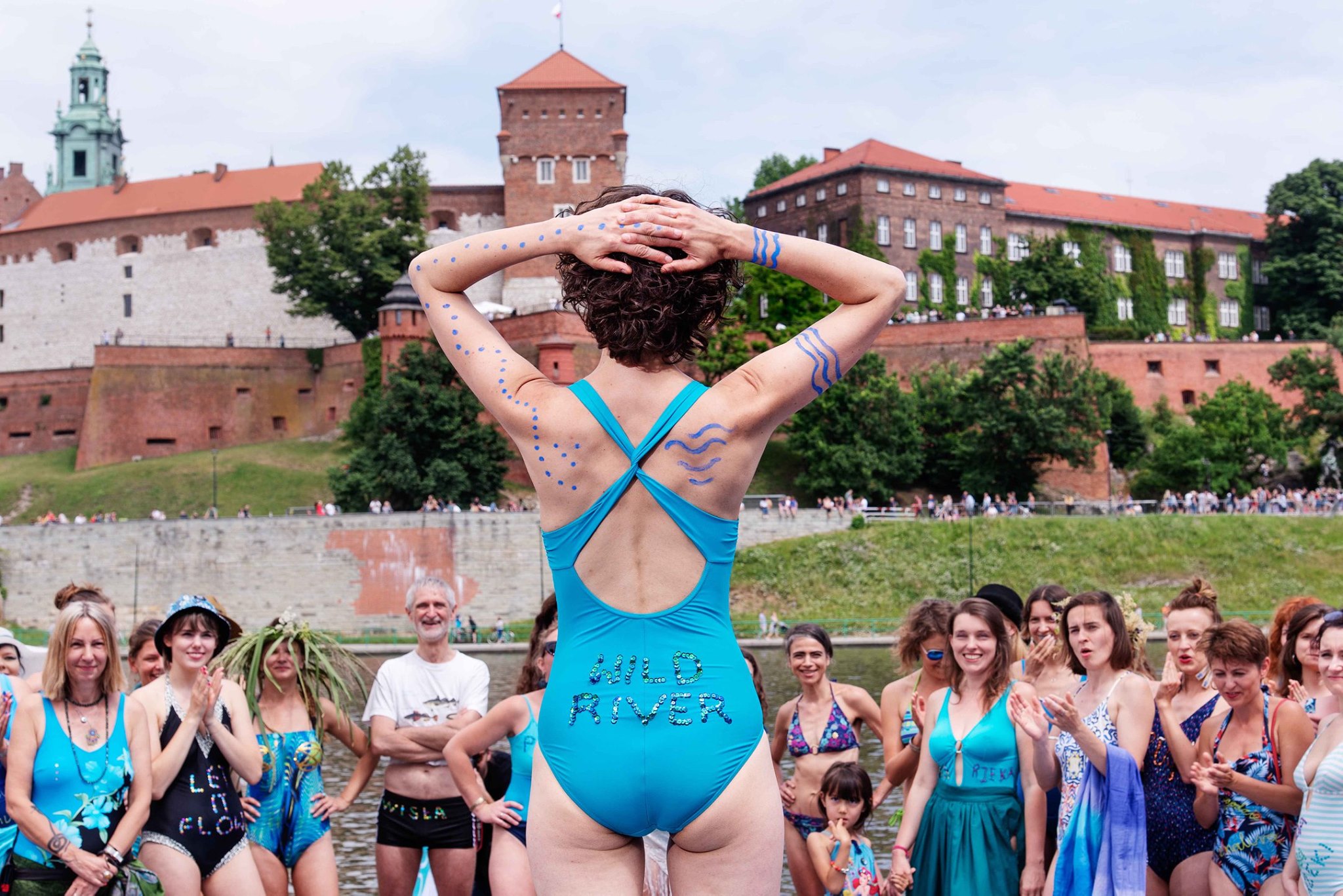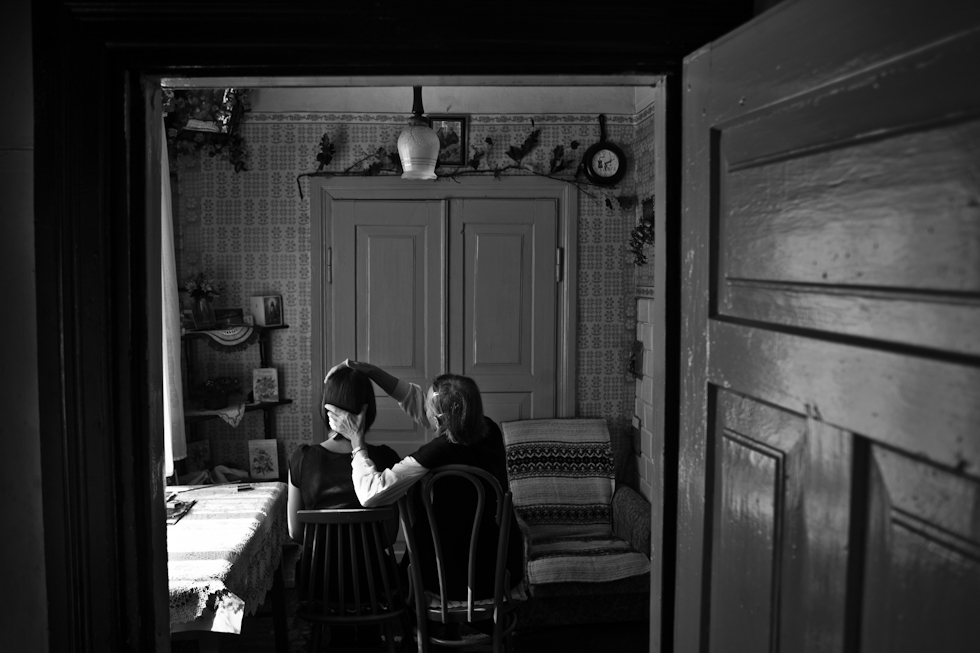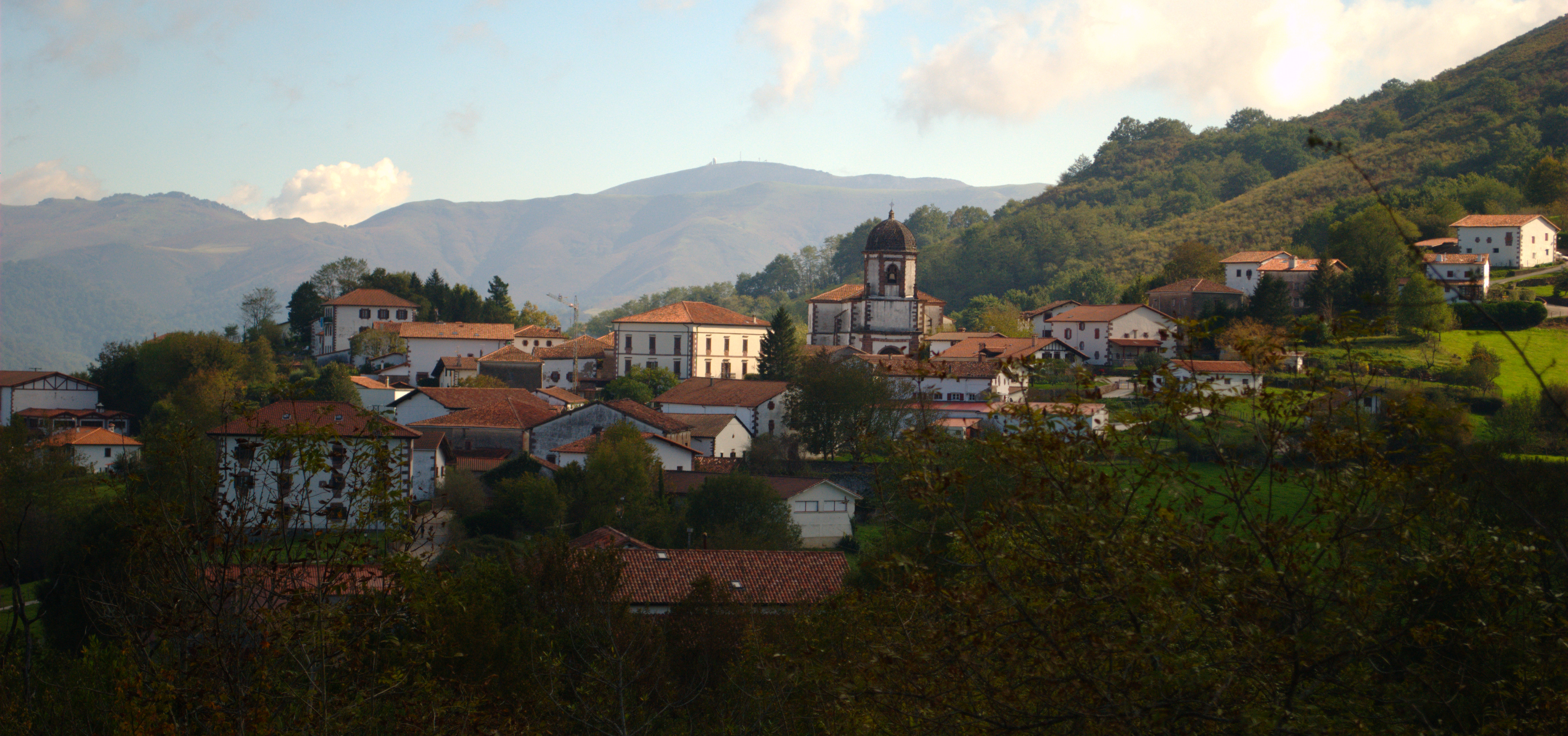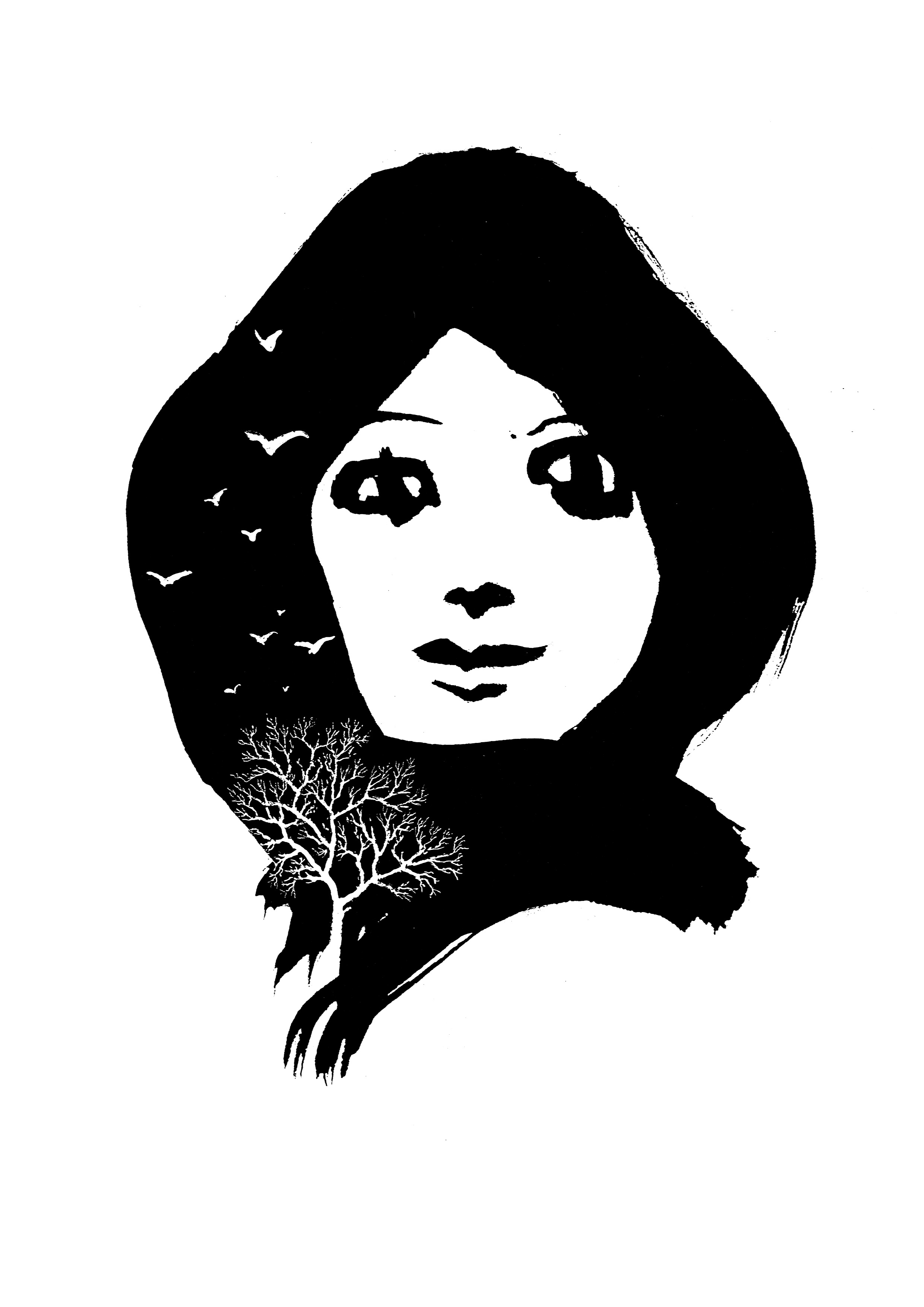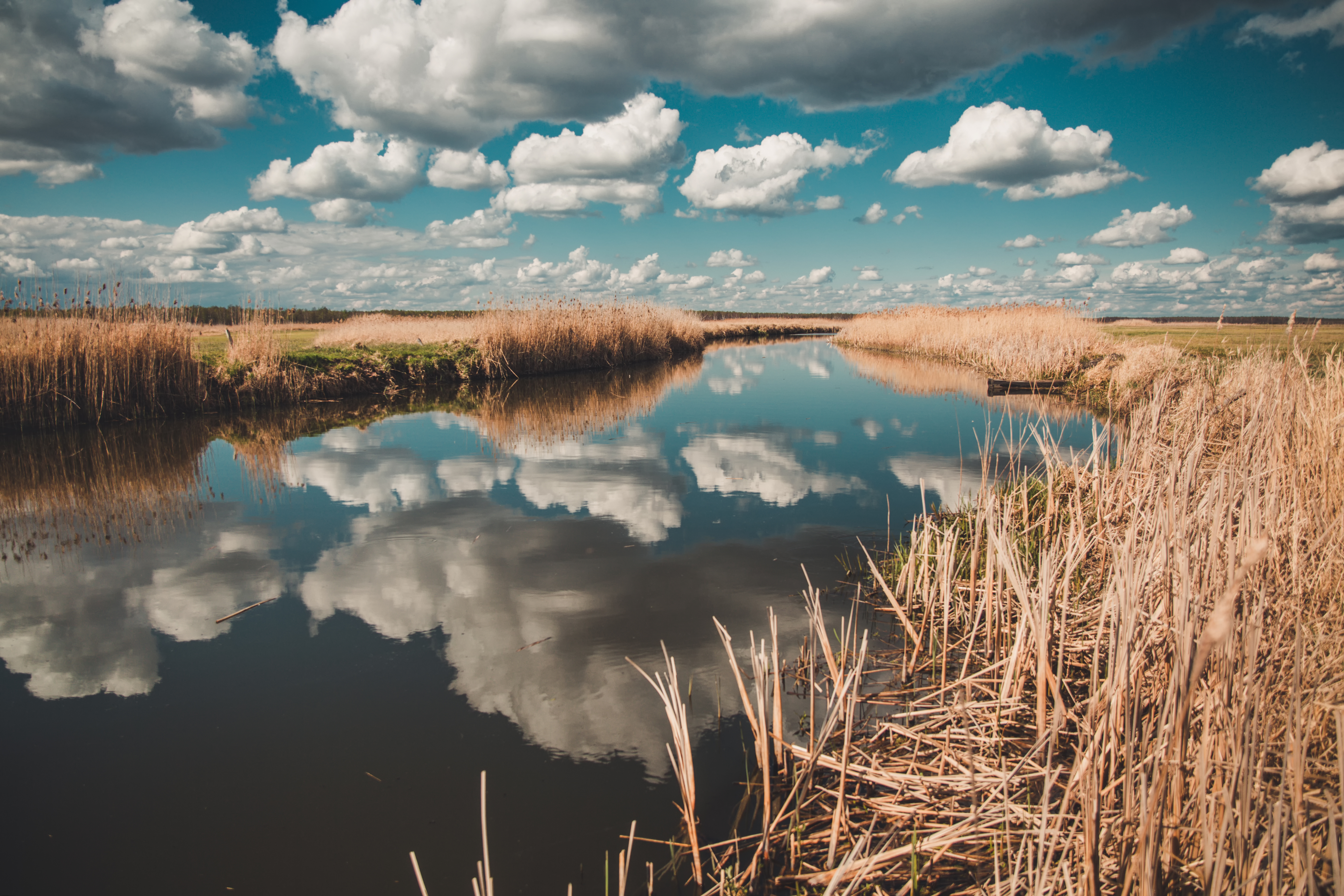
What does it mean to be a witch in 21st-century Europe? Our new cross-border reportage tries to answer this question by looking for the granddaughters of the witches that Europe was never able to burn. The heroes of the final part include the Kraków-based artist and activist Cecylia Malik.
A mother
The blare of chainsaws, falling trunks, sawdust. This was the landscape of Polish cities in January 2017. A new law on the protection of nature, the so-called Lex Szyszko, had just entered into force, allowing for almost unrestricted logging on private plots. Beforehand, in order to cut even one tree, one had to obtain official permission. Now people started grubbing up. They did not even stop in March, when the birds’ breeding season began. It is estimated that during the six months when the law was in force, three million trees were cut in Poland.
The Kraków-based artist and activist Cecylia Malik was watching this with frustration. “My Facebook feed was filled with logging. I would go out to the street and hear saws. The nation went crazy. People were afraid that the bill would be soon withdrawn, so they were cutting in advance.” A year earlier, in protest, Cecylia had organized a performance for hundreds of people, accompanied by a public concert played on chainsaws. This time, she did not have the strength to prepare another spectacular intervention, because she had recently given birth to a son. But she had to act.
“One morning, I asked my husband to come with me to a felling,” she recalls. “Without a strategy, but with a baby, a dog and a camera under my arm. At one point, I sat on a stump, started breastfeeding Ignacy, while Piotr took a picture of us. And that was it.”
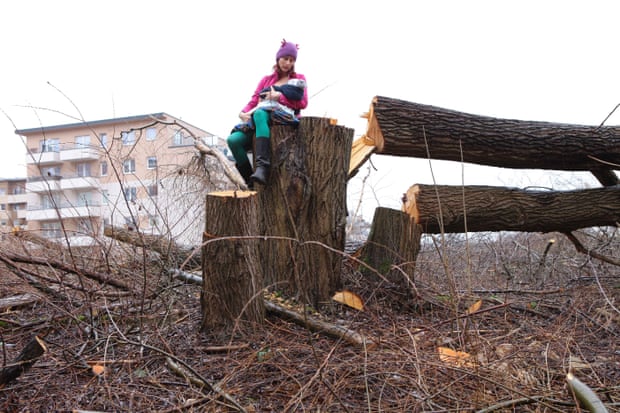
It looked like Narnia after a bulldozer invasion. Among frost-covered tree trunks, a mother is feeding an infant. Her purple skirt and red jacket seem almost inappropriate for the occasion. After all, they have come to a funeral. When Cecylia posted the photo on Facebook, an avalanche began. Finally, the felling had a face – that of a baby, the future. Someone commented: “This is what true patriotism looks like.”
“Together with some friends, art historian Ania Grajewska and voice trainer Agata Bargiel, we created the collective Polish Mothers on Tree Stumps (Matki Polki na Wyrębie). For our next action, we chose a spectacular felling in front of a shopping center. A dozen mothers came. Click! Thousands of shares, The Guardian publishes our photo. More protests rose up in Warsaw, Białystok, Katowice, Olsztyn, Bytom. ‘Wonderful, but what’s next?’ we pondered. ‘Why, let’s complain to the Pope, the ecologist! We won’t let this God-fearing government destroy nature!’”
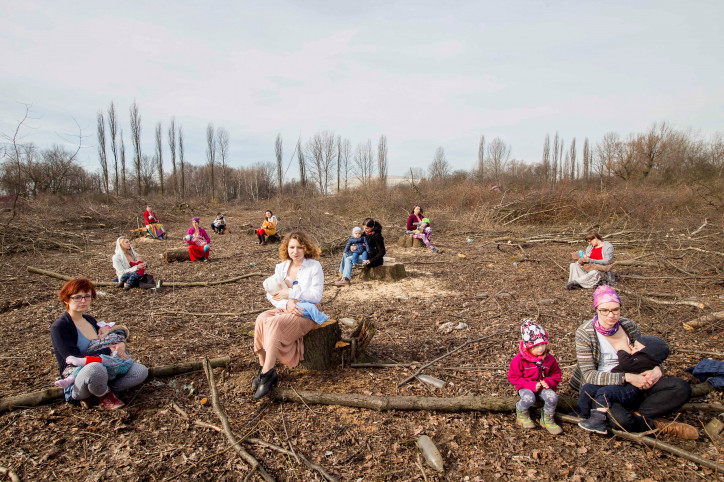
Thanks to a crowdfunding campaign, Polish Mothers on Tree Stumps travelled to the Vatican to hand over to the Pope a report on the state of the Polish environment prepared in cooperation with leading NGOs. Five women with infants, bags, prams and cloth stumps roamed the Eternal City. “Half a year later, the Minister of the Environment, Jan Szyszko, was dismissed,” Cecylia recalls. ”We could have made a small contribution there. We may seem like a bunch of mother hens, but we know.”
An ecofeminist
The concept of ecofeminism, coined in 1974 by Françoise d’Eaubonne, for the first time expressed something that many feminists have long known: that it is not a coincidence. It was no coincidence that when witches were being burned on stakes across Europe, the contemporary philosophers symbolically killed nature. It was no coincidence that the same Francis Bacon, who at the end of the 16th century proclaimed the “birth of the age of men”, developed an idea of science that was to “take nature into slavery” and “scorch over a slow flame”.
In 1993, the authors of Ecofeminism, Vandana Shiva and Maria Mies, argued that feminism must go hand in hand with environmentalism because the same discriminatory forces are at work against them. “What kind of forces?” I asked Shiva almost 30 years later in her Delhi office. “First of all is the most basic defense mechanism – in order to possess something, you must first objectify it. Nature had to be declared dead; the colonies – as pristine lands, and women – as irrational, emotional, visceral beings. Otherwise, this system could not have been successful,” she said in an interview for the Polish weekly Wysokie Obcasy. Shiva calls this system capitalist patriarchy, which “for centuries treated women and nature in a similar way – as raw material for exploitation. Because when you take away one’s vitality, independence, dignity, you can manipulate them for your benefit. Violence becomes the basis of the relationship, and the greater the separation, the more brutal the tools.”
Today, it is no coincidence that young women like Greta Thunberg or Alexandria Ocasio-Cortez have become environmentalist icons. And it’s no coincidence that they are attacked twice as hard – for questioning the status quo and for their gender. In the commentary “The Misogyny of Climate Change Deniers”, published by The New Republic, Martin Gelin examines the relationship between the anti-feminist right-wing and the climate change denial movement. He points out that their hatred of Thunberg and Cortez is loaded with a sense of insecurity. From the far-right men’s perspective, it is not the planet that is in danger, but their right to dominate.
In few European countries is the connection between the rights of women and those of the environment as tangible as in Poland. Five years ago, the ultra-conservative Law and Justice Party (PiS) came to power under the slogan of “the good change”. However, it meant nothing positive for Polish nature, nor for the reproductive rights of Polish women. In the autumn of 2016, the government announced its plans to curb the already draconian abortion law – one of the strictest in Europe. The new bill was to prohibit abortion in the case of congenious genetic defects of the fetus. It did not enter into force thanks to the hundreds of thousands of Poles who took part in the famous Black Protests. At the same time, the Ministry of the Environment gave the green light to logging in one of the oldest forests in Europe, the Białowieża Forest. A few months later, mass logging began across the country, while the degradation of Polish rivers continued.
Among the most outspoken critics of these changes was Cecylia Malik. She has nothing in common with new-age spirituality, but if we look at the witch as a figure of an independent woman who challenges the establishment, then in the Polish backyard that would be Malik.
An artist
On the other side of the barricade, the serious people in suits do not always take her seriously: “It’s not enough that I’m a woman, I’m also an artist. Not just an activist, but an environmental one. On top of that, a mother with a kid that spills things and gets dirty,” Cecylia laughs. “I like this role. It disarms formal situations.”
Her family has practiced art for over a century. The Maliks are famous for making Christmas cribs, a tradition inscribed on the UNESCO World Heritage List. Cecylia and her five sisters grew up in a studio, which was a meeting point for Cracovian artists: “Our parents taught us to love nature. They gave us piggyback rides in the mountains, played instruments, danced, drew with us. We were the queens of all backyard games. It was a home that one had to leave as an artist.”
She took up activism in 2011, when she learned that the municipal administration had agreed to construction works in the most beautiful piece of nature in Kraków. A foreign developer wanted to build blocks next to Zakrzówek – a beautiful emerald lake surrounded by limestone rocks. It turned out that the only legal argument against the investment was the fact that a species of protected, scarce large blue butterflies (Modraszek telejus in Polish) live in Zakrzówek. Cecylia immediately pictured thousands of Cracovians marching through the city with blue wings on their backs to protest against the devastation of nature. Together with her sister, artist Justyna Koeke, they created the Modraszek Kolektyw (‘Modraszek Collective’) campaign – a spectacular protest that united the city and became their trademark.
![]()
Their weapons of choice were humor and subversion. “When we dress as butterflies, climb trees or make braids in an act of protest, the authorities don’t know what to do with us,” Cecylia explains. “There’s an element of flirtation in this. We are cheeky but never aggressive, and above all – dead professional. NGOs and experts in law, protection of nature and spatial planning are with us. This situation is art itself. It creates a modern agora.”
An activist
Before 2012, the river meandered unhampered, leaving behind hundreds of impromptu bays. The shore was sandy. The banks were covered with trees, bushes, grass, fallen branches. Any storm or strong wind could have made this landscape look completely different. In 2012, the banks were artificially widened and covered with stones. The natural escarpment was grubbed up and encased with fresh soil. No vegetation or animals in sight. Since then, the river has been flowing obediently, inside a marked path that will not change for decades.
This shows how at a cost of two million złotys (£400,000), Kraków’s wild river Wilga was transformed into a regulated canal – a dead flume. According to the authorities, this is what Polish rivers should look like. In 2017, the Parliament adopted a plan for the development of inland waterways for 2016–2020, with 2030 in perspective. It envisages the construction of waterways for industrial and passenger transport on the two largest Polish rivers, the Vistula and the Oder, as well as on the picturesque Bug. Environmental NGOs call it the onset of an ecological disaster.
“It’s not a coincidence that all the great civilizations began in the river valleys,” wrote the Save the Rivers Coalition (KRR), which brings together organizations and experts opposing the government plan. “Riverside areas are one of the most favorable regions for agricultural development due to fertile soil and water availability.” They believe that river regulation will lead to the degeneration of these areas. They will become susceptible to erosion and droughts, and will require intensive fertilization. Heavy river transport may cause the extinction of many species of fish and complicate the livelihood of protected species of birds. Also, while natural rivers clean themselves, the regulated ones don’t, which increases the costs.
If this really is the onset of a disaster, then it will be an extremely expensive one. The government estimates an investment of 76.8 billion złotys (£16 billion). “When you take up environmental activism, you suddenly get in the way of big money,” Cecylia comments. “The politicians are hoping for the deal of a lifetime, and they don’t care how many ecosystems will be destroyed in the process of building these plants and dams. For them, the wilderness is not a value. No, they actually think that a concrete river bank looks elegant. As they fulfill dreams from the communist times, it eludes them that England, France, Sweden or Slovenia are re-naturalizing their rivers.”
Cecylia felt that Polish rivers, especially their queen, the Vistula, needed female support. In 2018, the Polish Mothers on Tree Stumps joined KRR as Rivers Sisters. Cecylia was inspired by a folk figurine at the Ethnographic Museum in Toruń – a female silhouette signed as ‘Vistula’ standing on the bow of a carved boat. Behind were her allies, named after smaller rivers. Women of all ages and backgrounds are invited to the happenings of Rivers Sisters. Grandmothers, mothers, daughters, sisters, daughters-in-law, cousins and friends play the tributaries of Vistula who come to her rescue.
A model
In 2018, they lent their voices to the rivers, and a year later – their bodies. To bring the subject out of its niche, they launched the #RiverFashion campaign, which combines ecology with the promotion of sustainable fashion. The activists rifled thrift shops in search of green and blue swimwear, then organized embroidery workshops and finally, fashion shows.
Few images have more marketing power than a female body in a swimsuit. Rivers Sisters play on these expectations. In their hands, a swimsuit turns into a rebellious object. Each of the more than 150 pieces in the collection is embroidered with a slogan, such as “Only beavers build on rivers”, “Wild beauty” or “Bug loves you” (a play on the name of the Bug river and the Polish word Bóg, i.e. ‘God’).
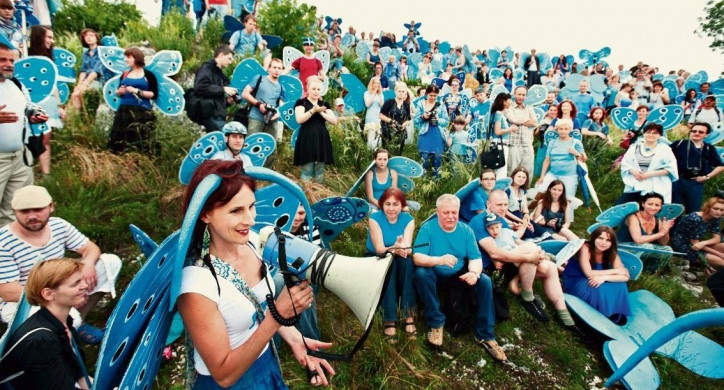
At first, not all Sisters were aboard. For some, the swimsuit meant objectification and shame. After all, the female body rarely belongs to women. It is constantly evaluated and disciplined. On the catwalks, how often do we see bodies with disabilities, after pregnancies or injuries? “It was a challenge for me too,” Cecylia admits. “After my third pregnancy, I didn’t like myself in a swimsuit. But today, I tend to forget I’m wearing one.”
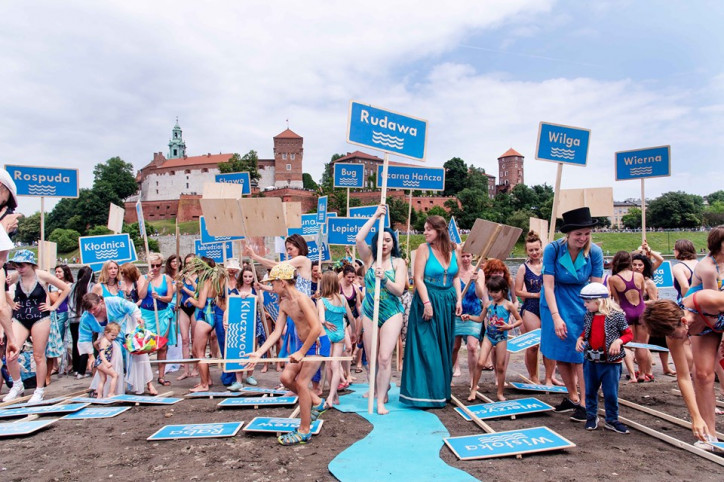
The first fashion show, in July 2019 in Kraków, turned into a demonstration of sisterhood. Almost 200 women participated – from all walks of life, all ages and sizes. Each of them was a manifesto.
A trickster
When we talk on the phone for the first time, Cecylia is glad that we noticed the ‘witchiness’ of Rivers Sisters “because it’s not obvious at first glance,” she explains. “This kind of feminism is close to me. I don’t identify with the one in the street demonstrations. I take part in them, but they’re too straightforward for me.”
She prefers trickster moves. Smuggling meanings, moving in between the lines. Polish Mothers on Tree Stumps are thus not only the voice of a modern patriotism, which sees rivers, forests and clean air as homeland. They are also a campaign promoting breastfeeding in public places, which is still met with mixed reactions in Poland. And Rivers Sisters? Sure, they fight against river regulation, but they also promote body-positivity.
Thanks to this subversiveness, Malik’s actions reach an audience far outside of the feminist and environmentalist bubbles. River Fashion, seemingly an innocent collection of swimsuits, caught the attention of the breakfast show of TVP2, a state-controlled channel. Cecylia happily accepted the invitation. While professional models were presenting the swimwear and the host was trying to restrain the conversation to fashion, Cecylia persistently talked about the regulation of rivers.
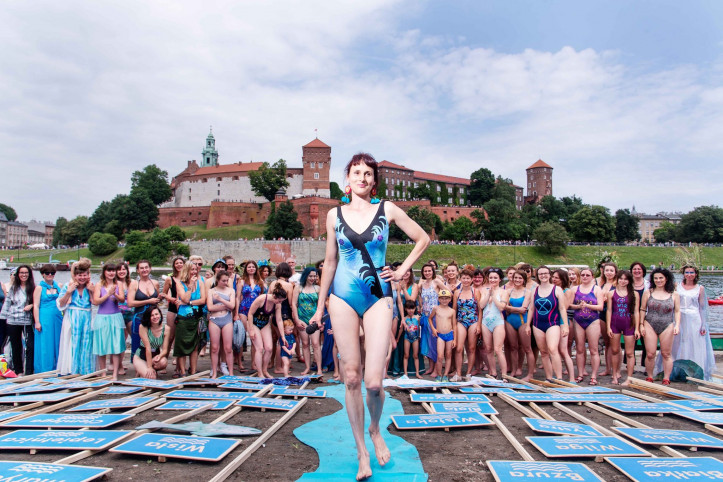
Rivers Sisters inspired followers across Poland. However, it was Polish Mothers on Tree Stumps, which began with an intimate action from Cecylia and her husband, that echoed through Europe. In December 2018, the Portuguese artist Maria Lucia Cruz Correia recreated the happening in Belgium, to protest against the country’s environmental policy. Under the slogan “Feeding Hope”, mothers breastfed in the processed landscape of the port in Gent. COP24 was underway in Poland, where Greta Thunberg accused politicians of stealing their children’s future. Feeding Hope activists wrote on Facebook: “Not only will the next generations have to bear the consequences of an undecided and spineless government, as mothers we also realize that we are handing over pollution and our fears to our children.” In January 2019, the activists breastfed at the front of the climate march in Brussels, which counted over 70,000 participants. For their next actions, fathers joined in.
Men are important allies of Cecylia, too. It is primarily her husband Piotr Dziurdzia, who co-creates the happenings, but also a group of experts and activists. Although her latest projects originate from female friendships, there is a place in them for Creeks Brothers.
A sailor
In July 2019, coming to the rescue of the Vistula ceased to be a metaphor. Rivers Sisters embarked on a three-week long rafting trip from the south to the north of Poland, on a traditional river scow. Along the way, they organized happenings, discussions, embroidery workshops and fashion shows. 40 women with children participated in the relay, the youngest of whom was three months old. The trip confirmed what they already knew – that river regulation is pointless. “Our scow was barely ten-centimetres deep and yet we would get stuck on tree trunks and in the shallows. As early as in Kraków, the river was so shallow that we transported the scow with a crane,” Cecylia recalls.
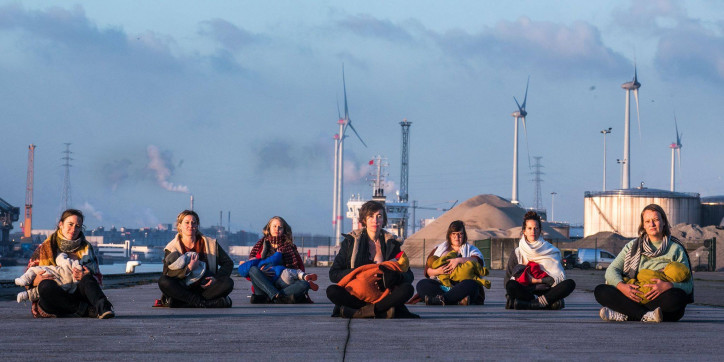
The icing on the cake was Warsaw. Rivers Sisters paid a visit to the Minister of Marine Economy and Inland Navigation to hand over to him an appeal to save Polish rivers. Vistula, Raba, Brda, Pilica and Bzura strutted through the courtyard of the ministry, accompanied by brother Bug. Carrying KRR coalition flags, they proudly sported their swimsuits, while Bug also wore a salmon-shaped hat. The ministry’s staid building had not seen so many colors in years.
At the entrance, they were stopped by guards: “What’s the point of this circus? If you want to enter, it has to hold water.”
After a while, however, a voice in the guard’s receiver urged: “Let them in immediately, please.”
“The minister Marek Gróbarczyk was absent, so a spokesperson accepted the appeal, in the presence of journalists. He was so civil, in his suit, in the majesty of the ministry. And then there we were, in our swimsuits,” Cecylia laughs. “I must confess, I am quite proud of that.”
On the Wysokie Obcasy magazine website someone commented: “These witches should be naked and then, for the sake of their idea, throw themselves into deep waters… Now that would be an action!”
So far, Cecylia is not interested.
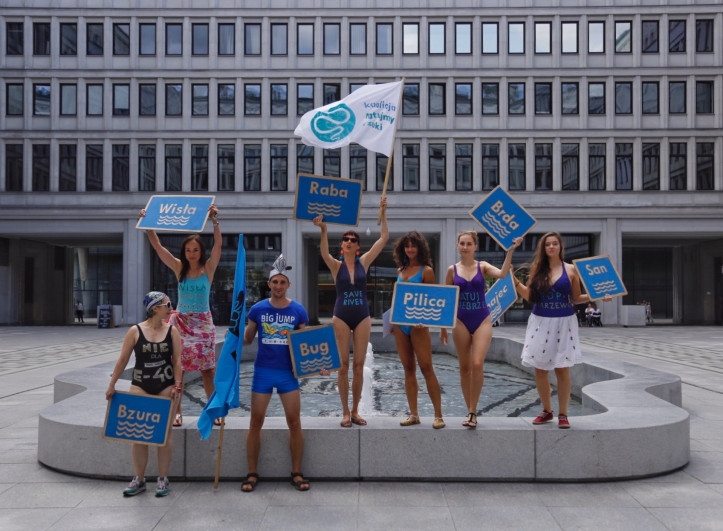
This story is part of the cross-border reportage project “Witch Hunt”. The research was enabled by a Reporters in the Field grant from the Robert Bosch Foundation. You can access the previous episodes here:


